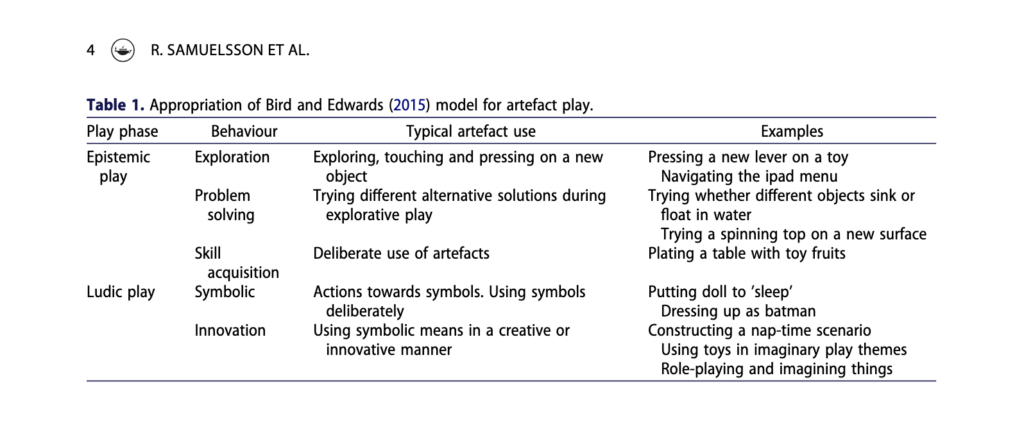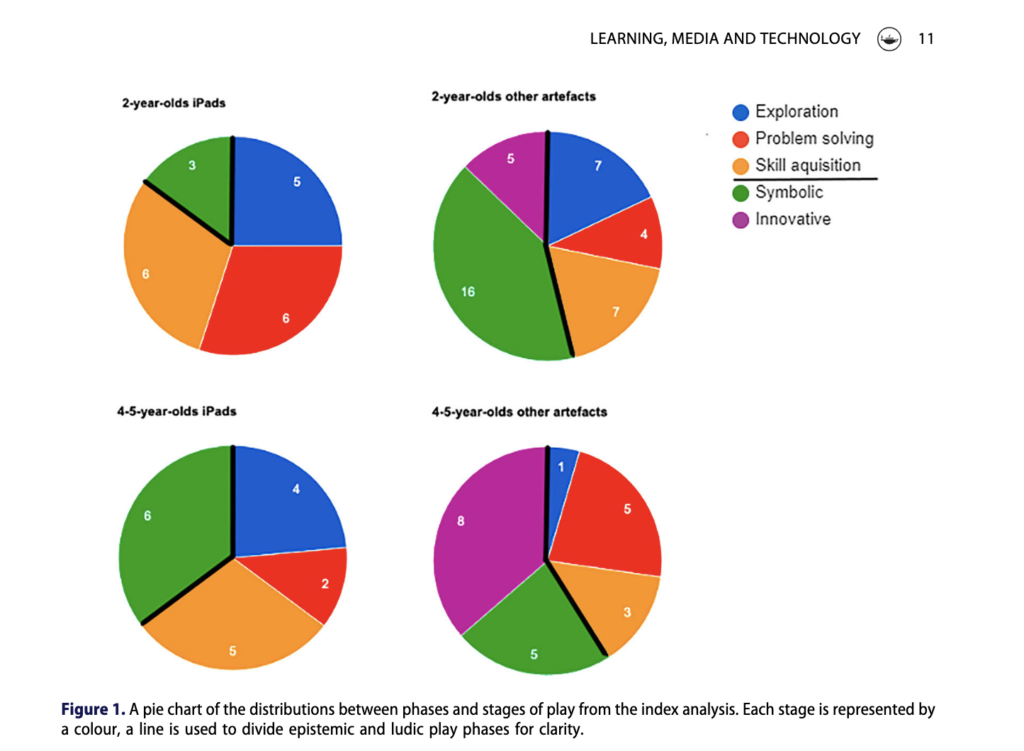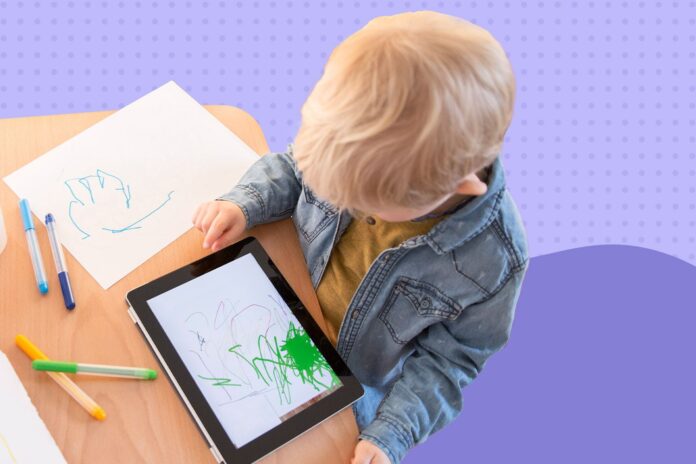Digital devices such as iPads are prevalent in children’s play from an early age. How this shapes young children’s play is an area of considerable debate without any clear consensus on how different forms of play are brought into the iPad interaction. In this study, we examined 98 play activities of children in two preschool settings, featuring 2 and 4–5-year-olds, their play with iPads and non-digital artefacts. Three analytical approaches were used: an index built on a digital play framework [Bird, Jo, and Susan Edwards. 2015. “Children Learning to Use Technologies Through Play: A Digital Play Framework.” British Journal of Educational Technology 46 (6): 1149–1160. doi:10.1111/bjet.12191 ], a quantitative description of the index, and a qualitative interaction analysis of children’s play. Results show how play with iPads is characterised as less ludic than play with other artefacts, and diverges from the age-typical norms of play. We discuss what these results might mean for children’s play in contemporary early childhood settings and for children’s learning.
Notes
“In contemporary developed societies, digital technologies have permeated most areas of human lives in a relatively brief period, and digital artifacts are among the most reoccurring everyday objects that young children play with.”


This article has a lot of information regarding children’s types of play. Also, it is interesting to observe these numbers above. Digital and Analog artifacts have both shown good results regarding children’s development. The analog artifacts though have an important role in innovative development.
Reference
Robin Samuelsson, Sara Price & Carey Jewitt (2022) How young children’s play is shaped through common iPad applications: a study of 2 and 4–5 year-olds, Learning, Media and Technology, DOI: 10.1080/17439884.2022.2141252




